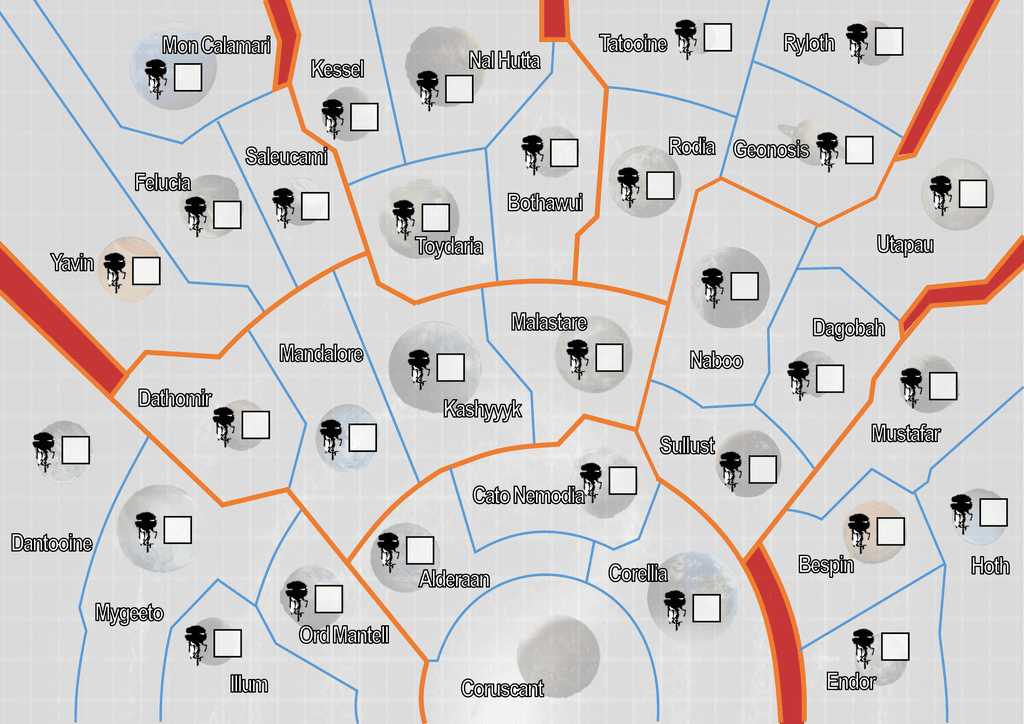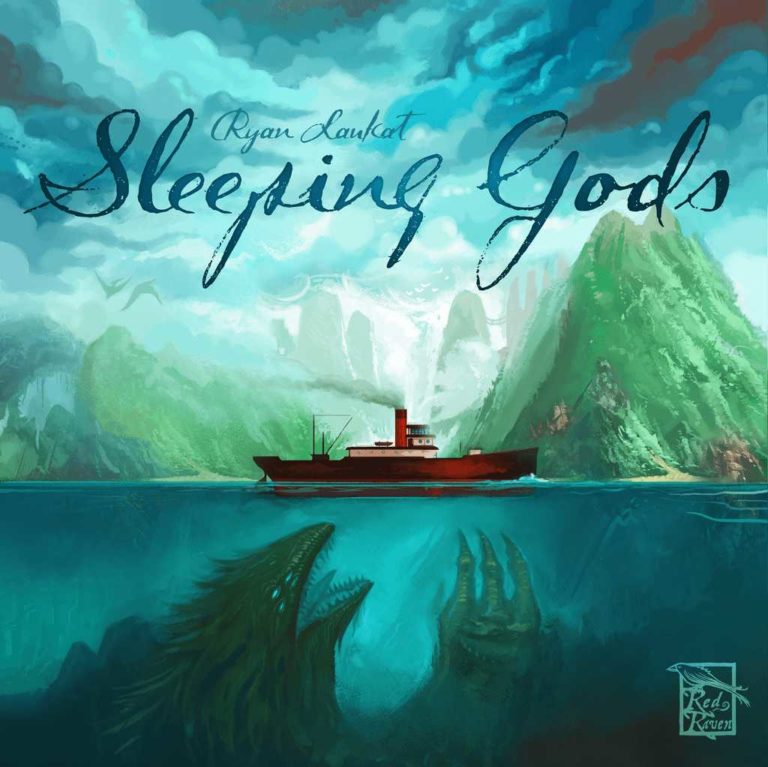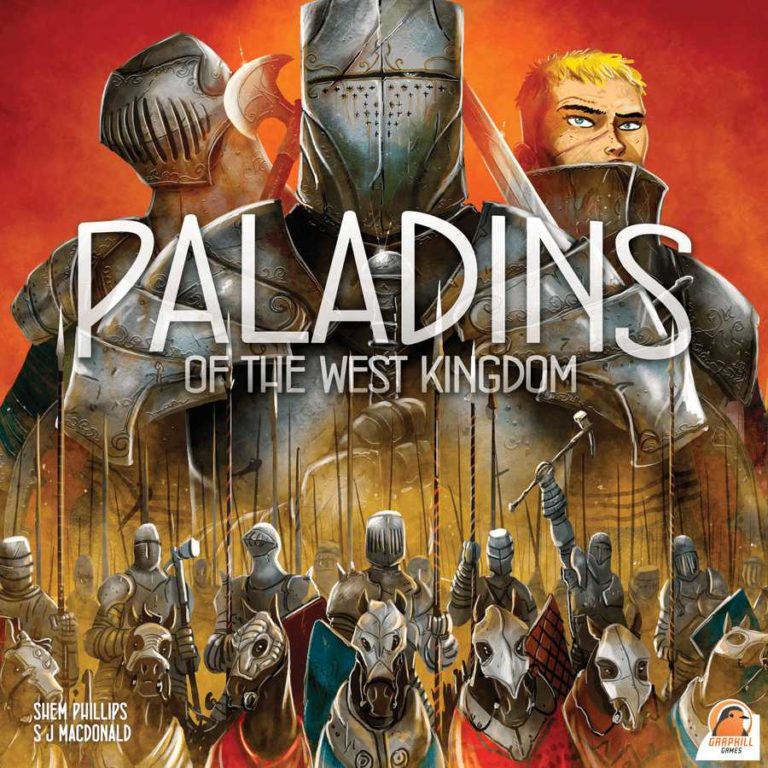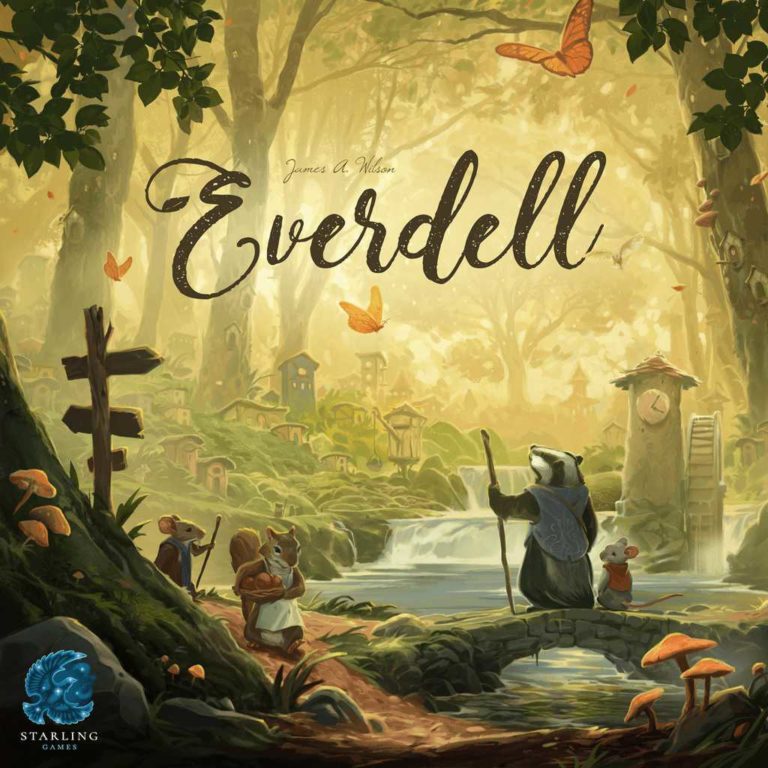Star Wars: Rebellion Review – A Galactic Battle Board Game
Star Wars: Rebellion Review – A Galactic Battle Board Game
Ah, Star Wars: Rebellion – just invoking the name sends a galaxy of memories spinning through my mind like so many Star Destroyers and X-Wings fighting for control of space. Speaking from personal experience, this isn’t just a game; it’s an adventure that unfolds on your table, echoing the epic space opera that has enchanted so many of us for decades. Through this Star Wars: Rebellion review, I’ll share the rush of sending a fleet into hyperspace, the tension of hiding a rebel base, and the satisfaction of toppling an Empire, or crushing a rebellion, all within the confines of a game board.
Key Points:
- Star Wars: Rebellion is an immersive board game that captures the essence of the Star Wars universe.
- The game involves asymmetrical warfare between the Galactic Empire and the Rebel Alliance, with players taking on distinct roles and objectives.
- The game’s components are high quality, featuring detailed miniatures and thematic artwork that enhance the immersive experience.
- Gameplay involves strategic positioning, resource management, and narrative-driven missions, offering a blend of strategy and thematic depth.
- The Rise of the Empire expansion adds new units, missions, and strategic options, enhancing the overall experience and renewing the game for veteran players.
- Star Wars: Rebellion provides an unmatched experience in capturing the epic scale and essence of the Star Wars saga, making it stand out from other Star Wars board games.
Star Wars: Rebellion is not a game to be taken lightly; it’s an afternoon or evening’s commitment, but oh, it’s worth every second. I remember my first foray into its complex systems – I was awash in excitement and apprehension, wondering if the gaming experience could possibly live up to my love of the theme. Yet, as the mechanics unfolded and the story emerged from each move, I realized that it’s more than a game; it’s a narrative being woven. And that, my friends, is where Star Wars: Rebellion shines brightest.
For those who are eager to dive into the rich tapestry of the Star Wars universe, who cherish the idea of leading the Rebel Alliance to victory or subjugating the galaxy as the Galactic Empire, this game is a labor of love you’re likely to cherish. Let me take you through the winding paths of strategy and thematic depth that make Star Wars: Rebellion a standout experience. Together, we’ll explore every element from the components and game mechanics to the expansion that many insist is essential.
The Essence of Star Wars: Rebellion
If any board game could claim to capture the essence of its source material faithfully, it’s Star Wars: Rebellion. Throughout my many playthroughs, I’ve savored the cat-and-mouse game between the Empire and the Rebels, the weight of each strategic decision, and the dramatic flips of fortune. Indeed, the spirit of Star Wars is alive in every leader deployment and every clash of fleets.
Overview of the Game’s Theme and Objectives
At its core, Star Wars: Rebellion is an asymmetrical war between the sprawling forces of the Galactic Empire and the scrappy Rebel Alliance. Setting the stage for a game of Star Wars: Rebellion, I’m reminded of the David versus Goliath dynamic that makes these narratives so compelling. You’ll play through the original trilogy, with one player commanding the Empire’s resources to locate and wipe out the Rebel base, while the other does everything possible to evade, build support, and fulfill objectives.
The game’s objectives reflect the narratives we know and love. As the Empire, you unleash the full force of military might, scouring the galaxy for the hidden Rebel base. You witness the power of this fully operational battle station – the Death Star – threatening to obliterate planets that defy Imperial rule. Conversely, as the Rebellion, you feel the pressure of avoiding the Empire’s grasp while achieving objectives to inspire the galaxy to join your cause. It’s a grand mission that brings every session alive with tactics, subterfuge, and the immutable hope of the underdog.
Star Wars: Rebellion is an asymmetrical war game that captures the dynamic of David versus Goliath, with one player commanding the Empire’s forces and the other leading the scrappy Rebel Alliance.
The Components and Quality of the Game Set
Upon opening the box of Star Wars: Rebellion, it’s impossible not to marvel at the heap of materials that spill out. The heart races thinking about the ensuing clashes and narrow escapes each game promises. Miniatures of Star Destroyers, X-Wings, and other iconic ships are abundant, and the attention to detail is sure to delight any Star Wars aficionado. The leader cards offer the satisfaction of customization, allowing players to shape their strategy and feel like true commanders in the Galactic Civil War.
However, it’s important to note, the quality is, for the most part, impressive. The game’s components stand up to scrutiny, with resin-like plastic figures that convey the gravitas and heft of their on-screen counterparts. The board itself sprawls across the table like a star map out of the Rebel War Room or an Imperial Command Center. Yet, in terms of component functionality, while most are excellent, some gamers find the movement of ships a touch clunky, like lumbering capital ships unable to react swiftly to the Rebel fleet’s guerrilla tactics. Furthermore, for those entrenched in the Star Wars universe, the allure of the many miniatures may not make up for the somewhat rote experience of combat, which hopefully, the expansion can alleviate.

Diving into Gameplay
Transitioning to gameplay, it’s where the thematic layers and tactical nuances truly shine in Star Wars: Rebellion. Each session is a dance of strategic positioning, careful planning, and playing to the strengths of one’s faction. With gameplay so vital to the experience, it’s here that the intent behind the game’s design becomes apparent – to invite players into a space where strategy and theme coalesce into a clash that is both cerebral and viscerally satisfying.
Setting Up the Galactic Battlefield
The first step in our galactic conquest is setting up the board, and it’s no small feat. The table transforms into a map of the galaxy with systems and sectors that will soon become battlegrounds for control. The Imperial player scatters fleets to the far reaches, seeding the vast space of the board with the specter of tyranny. Meanwhile, the Rebel player selects a secret location for their base, the heartbeat of the resistance nestled among the stars.
Setting up the game can take a while – upwards of 30 minutes, especially during early plays. The multitude of units, cards, and tokens lend a sense of grandeur but can initially seem daunting. But trust me, the effort is worth it. Even during setup, narrative threads begin to form as you contemplate how the Empire’s grip will tighten and how the Rebels will slip through its fingers.
The Asymmetric Roles: Rebels vs. Empire
Every game of Star Wars: Rebellion is a fresh tale of insurgency versus oppression. As the Rebellion, I’ve shuddered beneath the overwhelming might of the Imperial armies, feeling a mix of desperation and excitement as I undertook covert operations to undermine their overwhelming war machine. As the Empire, I’ve savored the power at my fingertips; the allure of control and order my legions could impose on the galaxy was intoxicating.

It’s this asymmetry that fuels the game. The objectives and means of the Empire and Rebellion couldn’t be more different, though victory is as sweet for one as it is for the other. The Imperials deploy acute strategies to find and crush the Rebel base using brute force and intimidation, while the Rebels employ clever tactics and subversive deeds to survive the Empire’s relentless onslaught. Each side brings a distinct gameplay experience, each with its own unique challenges and choices.
Strategy and Tactics for Beginners
Entering the world of Star Wars: Rebellion might seem daunting at first, but mastering its intricacies is an immensely rewarding journey. I recommend new players start slow, focusing on learning the rules thoroughly before delving too deep into strategic intricacies. Early on, it’s essential to understand the significance of leaders and how they influence the tide of battle. Deploy them wisely, as they are your most precious resources.
A beginner tip that’s served me well is to focus on objectives. For the Empire, pursuing swift and decisive action can often lead to hastening the endgame. As for the Rebels, staying nimble and evasive is key while subtly fulfilling objectives to garner the morale needed to overcome the Empire’s dominance. It’s also important to remember that while strategy is important, the dice rolls and card draws add an element of unpredictability that can swing outcomes, adding another layer of excitement to every session.
Mastering the intricacies of Star Wars: Rebellion is a rewarding journey that begins with understanding the significance of leaders, focusing on objectives, and embracing the unpredictability of dice rolls and card draws.
The Heart of Rebellion: Mechanics and Rules
The beating heart of Star Wars: Rebellion lies within its mechanics and rules, which draw players into the universe with remarkable fidelity. This game walks a fine line, offering depth and complexity while remaining accessible through its streamlined systems. It’s a testament to the thoughtful design that ties actions and outcomes so closely to the rich lore we’ve all come to adore.
Understanding the Movement and Combat Systems
Diving into the mechanics, a pivotal aspect is understanding the movement and combat systems that drive the game’s action. As I’ve navigated fleets across the galaxy, I’ve felt both the thrill and the frustration that comes with maneuvering through space. Movement initiates with the assignment of leaders, and it’s an art to predict opposing moves and strategize your counteractions.
Combat, then, is a layered affair where dice indicate success, but leaders and strategy cards influence the outcomes in more nuanced ways. It’s during these engagements that the game’s narrative potential is unbridled. I fondly recall moments, for instance, when a deftly played card turned the tide of what seemed an assured Imperial victory, or the despair when my Rebels were routed against all odds. These systems are designed to deliver tension and an echo of chaos, embodying the uncertainty of war.
Exploring the Role of Leaders and Missions
Leaders are the lifeblood of your strategic engine in Star Wars: Rebellion. Throughout my experiences, I’ve seen how the allocation of these pivotal figures can sway operations across the galaxy. They are much more than mere tokens; they embody the personalities and capabilities we’ve grown to love or loathe in Star Wars lore.
Missions represent opportunities to advance objectives and disrupt enemy plans. Choosing which leader to send on these assignments is pivotal, as each has unique skills best suited to specific tasks. I’ve found that the judicious assignment of leaders to missions that play to their strengths can be the difference between victory and defeat. There is beauty in the interplay here, a dance of risk and reward that requires you to consider your opponent’s potential moves and counter them with cunning, all while managing your own overarching strategy.

The Significance of Resource Management
Resource management is a cornerstone of the game, weaving through it like the thematic threads of the larger Star Wars narrative. Players must deftly manage troops, fleets, and the precious resource of time. I recall games won or lost on the strength of shrewd resource allocation, where every deployment, every construction of a new unit, felt as important as maneuvering X-Wings into a Death Star trench run.
It’s this interplay between resource generation and expenditure that will often dictate the ebb and flow of power on the board. Ascertain where your resources can have the most impact, whether by mounting a formidable defense or preparing a striking force capable of a surgical strike. Sometimes, the bravest move is to consolidate your forces, hold fast, and build your strength, while at other moments, a daring offensive can bring a swift and dramatic conclusion to the conflict.
Deftly managing resources is crucial in the game, determining the ebb and flow of power and impacting the outcome of every move.
The Visuals and Aesthetics
The visuals and aesthetics of Star Wars: Rebellion are not just icing on the cake – they are integral to the experience, adding richness to every session. The artwork and design elements take cues from the iconic imagery of the films, evoking passion and nostalgia while facilitating the strategic depth of the game.
Artwork and Design Elements
Every component of Star Wars: Rebellion feels like a tribute to its cinematic origins. The board is a masterwork of detail, giving a clear layout of the galaxy that is both functional and evocative. The cards and tokens carry this high standard, with artwork that wouldn’t feel out of place in a collector’s edition of the saga. Each piece, from the smallest fighter to the monolithic Death Star, is crafted with care.
Throughout my journey with the game, from my first tentative setups to the most recent skirmishes, the artwork and design have significantly enhanced the experience. It’s as if each game session unfolds within a painting of the Galactic Civil War, with the players as artists telling a new, yet familiar, tale each time. The ways in which the design elements interact and support the mechanics are seamless, setting the stage for a tactically rich theater of war in a universe we all recognize.
Immersion Through Game Components
One of the most incredible aspects of Star Wars: Rebellion is how the game components themselves serve as mini ambassadors of the galactic empire and the ragtag rebel alliance. From the highly detailed miniature Star Destroyers to the iconic X-wings, each piece feels like it has flown off the screen and landed on your table. Even the dice are substantial, with custom symbols that seamlessly integrate with the visual theme. Remember that time when I rolled a perfect defense against an overwhelming Imperial assault? Those dice became the tiny heroes of the Rebel Alliance – a tactile reminder of the epic narrative unfolding because of a few, well-timed, lucky rolls.
The game’s cards are another triumph in immersive design. Each leader card, whether it depicts Luke Skywalker or Grand Moff Tarkin, brings with it a sense of history and potential for narrative disruption. During one particularly intense session, the drawing of a single card had us all holding our breath, the pause as dense and dramatic as any cliffhanger in the films. The artwork across all the components isn’t just beautiful, it’s functional, helping players to meld strategy with storytelling in a way that is accessible and visually compelling – truly a testament to the power of immersion through game components.
The game components in Star Wars: Rebellion serve as mini ambassadors of the galactic empire and the rebel alliance, immersing players in the epic narrative and melding strategy with storytelling.
The Expansion: Rise of the Empire
Star Wars: Rebellion is a game that perfectly captures the scale and tension of the Star Wars universe right out of the box. But the Rise of the Empire expansion adds layers to this already deep experience, much like the story arcs that span the film saga. This expansion draws inspiration from “Rogue One: A Star Wars Story,” bringing in new missions, new cinematic battles, and the opportunity to explore fresh narratives. We’re talking about an expansion that doesn’t just offer more of the same – it’s a careful extension of the core game’s universe, enhancing the overall flavor and strategic options available to both the Imperial and Rebel players.
What the Expansion Adds to the Core Game
The Rise of the Empire expansion is more than just additional content; it’s a thoughtful augmentation of the Star Wars: Rebellion experience. New units like the U-wing and TIE striker bring variety to the fleets, and the expansion introduces heroes and villains with fresh, powerful abilities that can turn the tide of conflicts. Strategy aficionados will appreciate these additions since they bring new depth to fleet composition and battlefield tactics. Moreover, the addition of more objective cards for the rebels adds fuel to the already roaring fire of narrative potential in every game.
It also includes new mission cards, which transform the strategic landscape entirely. I recall this one session where a single new mission card let me sow seeds of insurrection on a seemingly loyal Imperial planet. That thrilling power play forced my opponent to rethink their entire strategy, emphasizing just how much these new components can dramatically alter the flow of the game.
New Strategies and Units in Rise of the Empire
The rise of the Rise of the Empire expansion‘s strategic complexity is undeniable. The introduction of cinematic combat, for instance, is a game-changer, replacing the original’s combat system in a way that’s both visually and mechanically more engaging. When I first encountered this new system, I was struck by the thematic richness it added to our battles; skirmishes now feel like scenes straight out of the films, with moments of heroism and cunning that stand out in memory.
The expansion also adds unique tactics cards that can be unlocked, providing new paths to victory and layering in strategic choices that can be both satisfying and agonizing. As a player, you’re forced to constantly reassess your strategy, particularly in the late game where a single turn can cascade into either victory or defeat. I vividly recollect strategizing for hours, crafting a meticulous plan only to have it undone by my opponent’s clever use of a new tactic card.

Additionally, leaders are made more versatile, and the action economy is shifted slightly, offering new ways to utilize your characters. The depth of decision-making brought to the game through these new units and leaders shouldn’t be underestimated. It’s the kind of expansion that renews the game for veteran players while remaining accessible enough so as not to intimidate the newcomers to the rebellion.
Personal Experiences and Opinions
Reflecting on my history with Star Wars: Rebellion, I can’t help but feel a deep affection for the stories it’s created around my gaming table. Each playthrough is a new chapter in my personal Star Wars saga, whether I’m commanding the might of the Empire or staging daring assaults as the scrappy rebels.
Highs and Lows of My Star Wars: Rebellion Playthroughs
My Star Wars: Rebellion playthroughs have been packed with highs – like the time when the success of an audacious mission by my rebel spies turned the tide against what seemed like an unbeatable Imperial force. Yet, there have been lows as well – I remember one particularly grueling session where the slow pace of troop movements felt reminiscent of molasses, detracting from the usual high-stakes drama.
In addition, while the theme hooks me every time, I have found that many games tend to unfold in similar patterns, making some campaigns feel slightly predictable. However, it’s not all about the major battles. Sometimes, it’s the small victories – a successful blockade run, managing to hide the Rebel base just one turn longer – that create the most tense and memorable moments.
Comparing Rebellion to Other Strategy Board Games
Comparing Star Wars: Rebellion to other strategy board games can be a bit like comparing a star destroyer to a speeder bike – they’re designed for entirely different scales and experiences. Where games like “Asgard” provide a worker placement game with hidden information, Rebellion offers a grand narrative that you can feel unfolding across the galaxy. Sure, there are moments when the intricate planning can feel exhaustive, but it is this same complexity that enables a rich array of strategies and an immersive depth, setting Rebellion apart from its peers.
Furthermore, Star Wars: Rebellion‘s asymmetric gameplay adds a sharp edge to this comparison. There’s a distinct feeling of power and control when playing as the Empire, contrasting with the high-pressure stakes and agility required when leading the Rebel faction. This duality is beautifully balanced and gives Rebellion a unique charm that I’ve rarely seen replicated with such finesse in other games.
Star Wars: Rebellion offers a grand narrative and immersive depth, setting it apart from other strategy board games with its rich array of strategies and unique asymmetric gameplay.
FAQs
1. How long does a typical game of Star Wars: Rebellion last?
A typical game of Star Wars: Rebellion can last anywhere from 3 to 4 hours, including setup and teardown. Gameplay duration can vary based on the strategies employed and how familiar players are with the game.
2. Is Star Wars: Rebellion suitable for players new to board games?
While Star Wars: Rebellion is not the simplest game for newcomers due to its deep strategy and duration, enthusiastic beginners with a passion for Star Wars might find the thematic engagement a compelling way to dive into more complex board gaming.
3. Can Star Wars: Rebellion be played with more than two players?
Star Wars: Rebellion is designed primarily as a two-player experience, but it offers rules for a four-player game with teams of two. This mode changes dynamics slightly but can add a social aspect for those looking for a collaborative experience.
4. What makes Star Wars: Rebellion stand out from other Star Wars board games?
Star Wars: Rebellion stands out from other Star Wars board games due to its epic scale, deep strategy, and ability to truly capture the sprawling saga’s essence. Its asymmetrical play style and comprehensive narrative approach offer a uniquely immersive Star Wars experience.
Conclusion
This Star Wars: Rebellion review should have given you a commanding view of the struggle for the galaxy. From the component-driven immersion to the strategic expansion that elevates every aspect of the game, Rebellion offers an unmatched experience. After countless hours commanding fleets and creeping rebellion, it’s clear – whether you’re plotting the fall of a government or uncovering a hidden base, the Force is strong with this one.
While the core game provides a fulfilling journey into the Star Wars universe, the Rise of the Empire expansion breathes fresh life into the tactical and narrative possibilities. Like a sage Jedi continually refining their understanding of the Force, Star Wars: Rebellion and its expansion provide a playground for strategic minds to test their mettle and for Star Wars fans to forge their own legendary tales.
Thank you, my fellow board game enthusiasts, for sharing in this journey through space and time. May your gaming tables always be a vessel for adventure, camaraderie, and, above all, fun. Until next time, may the Force be with you.
Signing off,
Lucas
More Boardgame Reviews:
This article uses material from BoardGameGeek and is licensed under the Creative Commons Attribution-Share Alike License.







